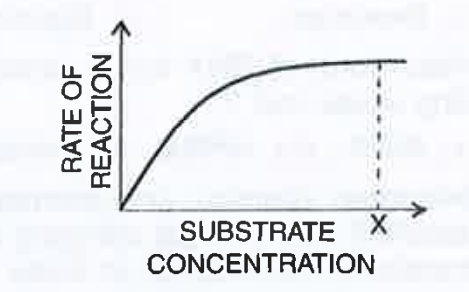Write the equation showing the relationship between equivalent and concentrate of a storng electrolyte.
To derive the relationship between equivalent and concentration of a strong electrolyte, we can use the Debye-Hückel-Onsager equation. Here’s a step-by-step solution:
Step 1: Understand the Terms
The Debye-Hückel-Onsager equation relates the molar conductance of an electrolyte solution to its concentration. The key terms in the equation are:
- λm: Molar conductance at a given concentration.
- λ0m: Molar conductance at infinite dilution.
- b: A constant that depends on the nature of the solvent and temperature.
- C: Concentration of the electrolyte.
Step 2: Write the Debye-Hückel-Onsager Equation
The relationship can be expressed as:
λm=λ0m−bC
This equation indicates that the molar conductance (λm) decreases linearly with increasing concentration (C).
Step 3: Relate Molar Conductance to Equivalent Conductance
For strong electrolytes, the equivalent conductance (Λ) can be related to molar conductance (λm) by the following relationship:
Λ=λmn
where n is the number of moles of ions produced per formula unit of the electrolyte.
Step 4: Substitute into the Equation
Substituting the expression for molar conductance into the equation for equivalent conductance gives:
Λ=λ0m−bCn
Step 5: Final Equation
Thus, the final equation showing the relationship between equivalent conductance and concentration of a strong electrolyte is:
Λ=λ0mn−bCn
Summary
This equation illustrates how the equivalent conductance of a strong electrolyte is affected by its concentration and the inherent properties of the electrolyte and solvent.
---
The Debye-Hückel-Onsager equation relates the molar conductance of an electrolyte solution to its concentration. The key terms in the equation are:
- λm: Molar conductance at a given concentration.
- λ0m: Molar conductance at infinite dilution.
- b: A constant that depends on the nature of the solvent and temperature.
- C: Concentration of the electrolyte.
The relationship can be expressed as:
λm=λ0m−bC
This equation indicates that the molar conductance (λm) decreases linearly with increasing concentration (C).
For strong electrolytes, the equivalent conductance (Λ) can be related to molar conductance (λm) by the following relationship:
Λ=λmn
where n is the number of moles of ions produced per formula unit of the electrolyte.
Substituting the expression for molar conductance into the equation for equivalent conductance gives:
Λ=λ0m−bCn
Thus, the final equation showing the relationship between equivalent conductance and concentration of a strong electrolyte is:
Λ=λ0mn−bCn
This equation illustrates how the equivalent conductance of a strong electrolyte is affected by its concentration and the inherent properties of the electrolyte and solvent.
Topper's Solved these Questions
- XII BOARDSBOOK - XII BOARD PREVIOUS YEAR PAPER ENGLISHCHAPTER - XII BOARDSEXERCISE - SET-II
32 Videos
- XII BOARDSBOOK - XII BOARD PREVIOUS YEAR PAPER ENGLISHCHAPTER - XII BOARDSEXERCISE - SET-III
31 Videos
- SAMPLE PAPER 2019BOOK - XII BOARD PREVIOUS YEAR PAPER ENGLISHCHAPTER - SAMPLE PAPER 2019EXERCISE - SECTION: D
1 Videos
Similar Questions
Which equation gives the relationship between equivalent or molar conductance and concentration of a strong electrolyte ?
View SolutionThe equivalent conductance of strong electrolyte:
View SolutionWrite the equation showing the relationship between standard free energy and standard cell potential.
View SolutionWrite equation for the reaction between sulphur and concentrated nitric acid.
View SolutionLichens show symbiotic relationships between
View SolutionWrite an equation to show the reaction between Plaster of Paris and water
View SolutionWrite the equation to show the process of respiration.
View SolutionWrite the equation of SHM for the situations show below:

View SolutionWrite the equation of SHM for the situations show below:

View SolutionThe given graph is showing the relationship between the rate of enzyme reaction and concentration of substrate. At concentration of substrate greater than X, the

View Solution
